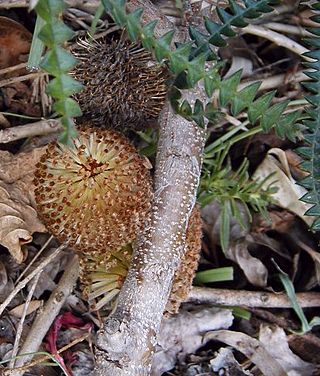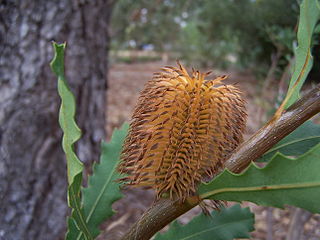| Lumbriculidae | |
|---|---|
 | |
| Scientific classification | |
| Domain: | Eukaryota |
| Kingdom: | Animalia |
| Phylum: | Annelida |
| Class: | Clitellata |
| Order: | Lumbriculida |
| Family: | Lumbriculidae Vejdovský, 1884 |
| Genera | |
See text | |
The Lumbriculidae are a family of microdrile oligochaetes common in freshwater environments, including streams, lakes, marshes, wells and groundwater. They should not be confused with the earthworm family Lumbricidae. Many species and genera are highly endemic, mainly in Siberia and the western parts of North America. Lumbriculidae are the only family in the order Lumbriculida. [1]
The family contains:
- Bichaeta
- Cookidrilus
- Subgenus Eclipidrilus
- Subgenus Leptodrilus
- Subgenus Premnodrilus
- Incertae sedis
- Eumuliercula
- Guestphalinus
- Hrabea
- Lamprodrilus achaetus
- Lamprodrilus ammophagus
- Lamprodrilus bulbosus
- Lamprodrilus wagneri
- Lamprodrilus mrazeki
- Lamprodrilus nigrescens
- Lamprodrilus pygmaeus
- Lamprodrilus isoporus
- Lamprodrilus michaelseni
- Lamprodrilus bythius
- Lamprodrilus satyriscus
- Lamprodrilus melanotus
- Lamprodrilus pallidus
- Lamprodrilus dybowskyi
- Lamprodrilus inflatus
- Lamprodrilus issossimovi
- Lamprodrilus jamburaensis
- Lamprodrilus novikovae
- Lamprodrilus polytoreutus
- Lamprodrilus secernus
- Lamprodrilus semenkewitschi
- Lamprodrilus stigmatias
- Lamprodrilus tolli
- Lamprortus
- Lumbriculus variegatus
- Lumbriculus ambiguus
- Lumbriculus multiatriatus
- Lumbriculus genitosetosus
- Lumbriculus inconstans
- Lumbriculus sachalinicus
- Lumbriculus olgae
- Lumbriculus alexandrovi
- Lumbriculus kareliensis
- Lumbriculus illex
- Lumbriculus kolymensis
- Lumbriculus tetraporophorus
- Lumbriculus japonicus
- Lumbriculus mukoensis
- Phagodrilus laqueus
- Phagodrilus balchi
- Phagodrilus baueri
- Phagodrilus chetcoensis
- Phagodrilus hauserensis
- Phagodrilus johnsoni
- Phagodrilus klamathensis
- Phagodrilus macnabi
- Phagodrilus minimus
- Phagodrilus oregonensis
- Phagodrilus parvus
- Phagodrilus pereditus
- Phagodrilus phoebe
- Phagodrilus secundus
- Phagodrilus stellatus
- Subgenus Rhynchelmis
- Subgenus Rhynchelmoides
- Subgenus Sutroa
- Incertae sedis
- Pseudorhynchelmis [3]
- Secubelmis
- Spelaedrilus
- Subgenus Stylodrilus
- Stylodrilus absoloni
- Stylodrilus asiaticus
- Stylodrilus aurantiacus
- Stylodrilus brachystylus
- Stylodrilus californianus
- Stylodrilus cernosvitovi
- Stylodrilus chukotensis
- Stylodrilus contractus
- Stylodrilus crassus
- Stylodrilus curvithecus
- Stylodrilus elongatus
- Stylodrilus glandulosus
- Stylodrilus gracilis
- Stylodrilus heringianus
- Stylodrilus insperatus
- Stylodrilus lankesteri
- Stylodrilus lemani
- Stylodrilus leucocephalus
- Stylodrilus longiatriatus
- Stylodrilus minutus
- Stylodrilus mirandus
- Stylodrilus mirus
- Stylodrilus mollis
- Stylodrilus opisthoannulatus
- Stylodrilus parvus
- Stylodrilus subcarpathicus
- Stylodrilus subitus
- Stylodrilus sulcatus
- Stylodrilus sulci
- Stylodrilus suputensis
- Stylodrilus wahkeenensis
- Subgenus Bythonomus
- Subgenus Styloscolex
- Subgenus Neoscolex
- Tatriella
- Tenagodrilus
- Trichodrilus allobrogum
- Trichodrilus anglieri
- Trichodrilus aporophorus
- Trichodrilus bonheurensis
- Trichodrilus cantabrigiensis
- Trichodrilus capilliformis
- Trichodrilus cernosvitovi
- Trichodrilus claparedei
- Trichodrilus culveri
- Trichodrilus diversisetosus
- Trichodrilus gordeevi
- Trichodrilus hrabei
- Trichodrilus icenorum
- Trichodrilus intermedius
- Trichodrilus itchaensis
- Trichodrilus leruthi
- Trichodrilus longipenis
- Trichodrilus macroporophorus
- Trichodrilus medius
- Trichodrilus montenegrensis
- Trichodrilus moravicus
- Trichodrilus pauper
- Trichodrilus pragensis
- Trichodrilus ptujensis
- Trichodrilus rouchi
- Trichodrilus seirei
- Trichodrilus sketi
- Trichodrilus stammeri
- Trichodrilus strandi
- Trichodrilus tacensis
- Trichodrilus tatrensis
- Trichodrilus tenuis
- Wsewolodus
- Yamaguchia












